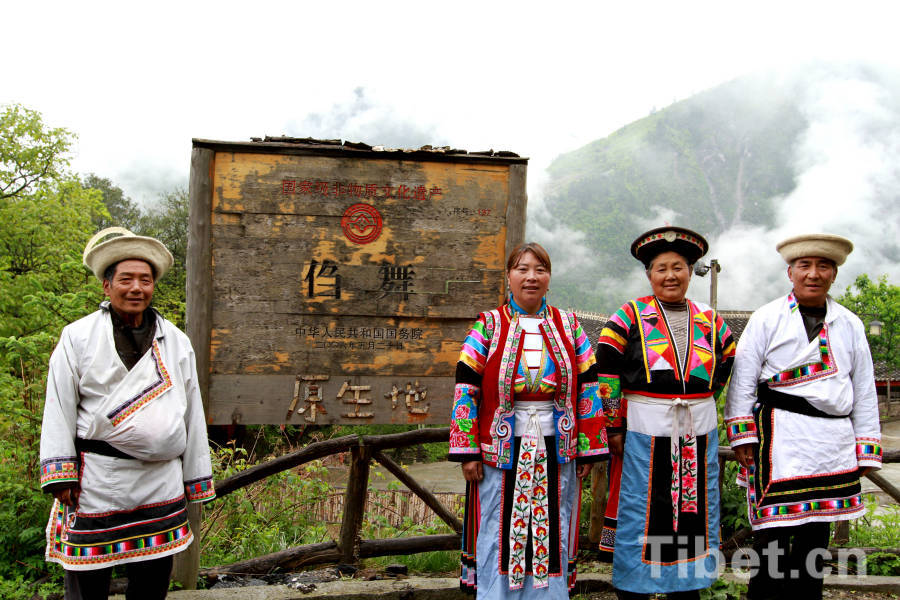The Baima twelve-mask dance, or the "Zhou dance" as known by the Tibetan Baima (white horse) tribe, is a mysterious dance dance on festive occasion or during rituals when sacrifices are offered to ancestors. In 2006, the Zhou dance was classified by the State Council in the national level UNESCO Intangible Cultural Heritage list.
The history of the Zhou dance goes back to before the 16th century, through the then Qing dynasty (1644-1911) and also during the time of the Republic of China (1911-1949), in the early to mid-20th century. According to research from the Jiuzhaigou County in Sichuan Province by the department of the Baima (white horse Tibetan tribe, the genetic makeup of the Baima ancestors of the Di, Qiang and Tibetan ethnic tribe groups are all inter-mixed. Also, the groups' language is not exactly the same as the primary strand of Tibetan language, with the groups calling their own language the "Baima" language. The religious beliefs also differ between the ethnic Tibetan group and the ethnic Qiang group, with different natural objects as gods.
The Baima people created masks and dances in memory of their ethnic leader, Yang Jian, and thus created the Zhou dance. The main areas in which Baima people settled in the province of Sichuan include; the Aba Tibetan and Qiang Autonomous Prefecture as well as numerous villages within Jiuzhaigou County, including: Wujiao, Majia, Caodi, Anle, Baihe, Guoyuan, Shuanghe, Baohua, Luoyi and Yonghe.
During the Zhou dance festivities, the number of masks displayed normally is an odd number, not an even number, and the animal figures portrayed by the masks include the lion, cow, crane, phoenix, snake, Chinese unicorn, leopard and a sweet bamboo flute, a type of spring-time bird.
Original and religious spirits composed the soul of the Zhou dance, embodying the Baima people's worship for natural spirits. The Baima people sought a harmonious unity between man and nature, to express their thanks and credit to nature when a good harvest was bestowed upon them. They use their own unique forms of expression and prayer to pray for Heavenly God.
The Baima people's Zhou dance is a sacrificial and ritual dance for gods that also serves as a form of festive entertainment and celebration. Within the dance, the animal spirits of the Baima people are brought to life through their original and bold performances, startling mystique, intense visual and sound displays. It is a heart moving event to watch.

Yingge Village of Jiu Zhaigou County in Aba Tibetan and Qiang Autonomous Prefecture is the origin place of Zhou Dance. [Photo/China Tibet Online]
